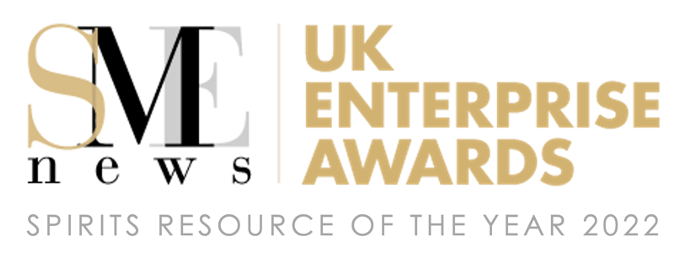Estonian Gin & Distillery Guide
On This Page: Estonian Gin and Distillery directory, reviews and tasting notes, distillery tours and Gin Schools in Estonia, interviews with Estonian distillers, and industry insights.
|
Estonia has a long history of producing spirits, often using rye which is grown widely across the country, with the first record of spirits being made in Estonia dating back to 1485. By 1800 there were over 700 Vodka distilleries in Estonia before excise laws were introduced in 1863 with strict requirements for Vodka production. Since 2015 when Estonia's largest alcohol producer, Liviko, launched Crafter's Gin, more gin distilleries have emerged including Junimperium Distillery and The Hope Distillery, both in Tallinn. A visit to the Moe Distillery Museum is also recommended for an in-depth insight into the history of distilling in Estonia.
|
Estonian Gin Reviews - A to Z
Gindome
|
The Hope Distillery and the Gindome gin range were launched in 2022 by founder and Master Distiller, Steen Lerche-Jensen. The Hope Distillery, located between central Tallinn and Tallinn Airport, is home to their 200L copper still as well the first Gin School in the Baltics. Find out more: Info & Review | Interview.
|
Junimperium Gin
|
Junimperium Distillery in the Telliskivi Quarter of Tallinn opened in 2019 alongside launching Junimperium Blended Dry Gin. The distillery is offers tours and tastings, and Junimperium's gins feature Estonian juniper and three further varieties from around the world, with the bottle stoppers also being made from juniper wood. Find out more: Info & Review | Interview.
|
For more Estonian Gins, try:
- Crafter's Gin, Flavorwood Smoky Gin, Lahhentagge Ösel Dry Gin, Metsis Gin, Mohn Poppy Gin, Saaremaa Gin, and Tohi Gin
Gin Distillery Tours in Estonia
Junimperium Distillery, The Hope Distillery and Tohi Distillery all offer distillery tours and tastings, with The Hope Distillery also offering Gin School experiences, which all make for the ideal experience for gin lovers living in or visiting Estonia:
|
Meet the Makers
Get to know some of Estonia's finest gin creators and distillers in our 'Meet the Maker' interviews. Find out what inspired them and how they created and launched their gin, how it's made, what botanicals are used, what you can experience if you visit their distilleries, how best to serve their gins and what they have planned for the future:
Industry Insights
What is Estonia's history with spirits and distilling?
The Moe Distillery Museum website has a fascinating timeline on their page that begins from 1485. It states on the timeline, "In Estonia. the first written record of alcohol goes back to 1485, when the Reval Great Guild of wine producers issued an order prohibiting the residents of suburban areas to sell spirits in town. This year officially marks the beginning of alcohol production in Estonia. Only members of the Great Guild, merchants, and their widows had the right to produce alcohol for sale." Find out more about Estonian Distilling on the Moe History page here.
How has the Estonian Gin industry developed in recent years?
The Estonian Gin industry has been developing steadily over the last 7-8 years with new distilleries opening and new gins coming to the market. Liviko, Estonia's oldest and largest alcohol producer, was one of the first when launching their Crafter's brand in 2015. Meanwhile, Metsis Gin and Lahhentagge Gin were some of the first small batch craft gin brands in Estonia. Junimperium Distillery opened the doors in spring 2019, followed by further launches such as The Hope Distillery and TOHI Distillery, as well as small brands such as Suti Gin and Põhjaka Gin which are locally focused and sold only in a small number of shops.
What makes Estonian Gin different / special?
It is common for gins around the world to take something from their homeland, and many Estonian Gins use rye spirit as a base spirit as Estonia is traditionally a rye producing country. There are brands focused on only using local botanicals and this achieves an almost Nordic style of gin, while other brands combine local botanicals with botanicals from around the globe.
What's next for the gin industry in Estonia?
We will see more new distilleries and brands coming to the market and there is a small but growing number that offer distillery tours too. The growing interest in local spirits can help the Estonian Gin brand to become stronger and more popular, especially if producers are concentrating on the quality of the liquid. Existing brands are expected to enlarge their product portfolio, such as with Aged Gins and further varieties, and perhaps we will see an Estonian Gin becoming well known on the international market.
The Moe Distillery Museum website has a fascinating timeline on their page that begins from 1485. It states on the timeline, "In Estonia. the first written record of alcohol goes back to 1485, when the Reval Great Guild of wine producers issued an order prohibiting the residents of suburban areas to sell spirits in town. This year officially marks the beginning of alcohol production in Estonia. Only members of the Great Guild, merchants, and their widows had the right to produce alcohol for sale." Find out more about Estonian Distilling on the Moe History page here.
How has the Estonian Gin industry developed in recent years?
The Estonian Gin industry has been developing steadily over the last 7-8 years with new distilleries opening and new gins coming to the market. Liviko, Estonia's oldest and largest alcohol producer, was one of the first when launching their Crafter's brand in 2015. Meanwhile, Metsis Gin and Lahhentagge Gin were some of the first small batch craft gin brands in Estonia. Junimperium Distillery opened the doors in spring 2019, followed by further launches such as The Hope Distillery and TOHI Distillery, as well as small brands such as Suti Gin and Põhjaka Gin which are locally focused and sold only in a small number of shops.
What makes Estonian Gin different / special?
It is common for gins around the world to take something from their homeland, and many Estonian Gins use rye spirit as a base spirit as Estonia is traditionally a rye producing country. There are brands focused on only using local botanicals and this achieves an almost Nordic style of gin, while other brands combine local botanicals with botanicals from around the globe.
What's next for the gin industry in Estonia?
We will see more new distilleries and brands coming to the market and there is a small but growing number that offer distillery tours too. The growing interest in local spirits can help the Estonian Gin brand to become stronger and more popular, especially if producers are concentrating on the quality of the liquid. Existing brands are expected to enlarge their product portfolio, such as with Aged Gins and further varieties, and perhaps we will see an Estonian Gin becoming well known on the international market.







